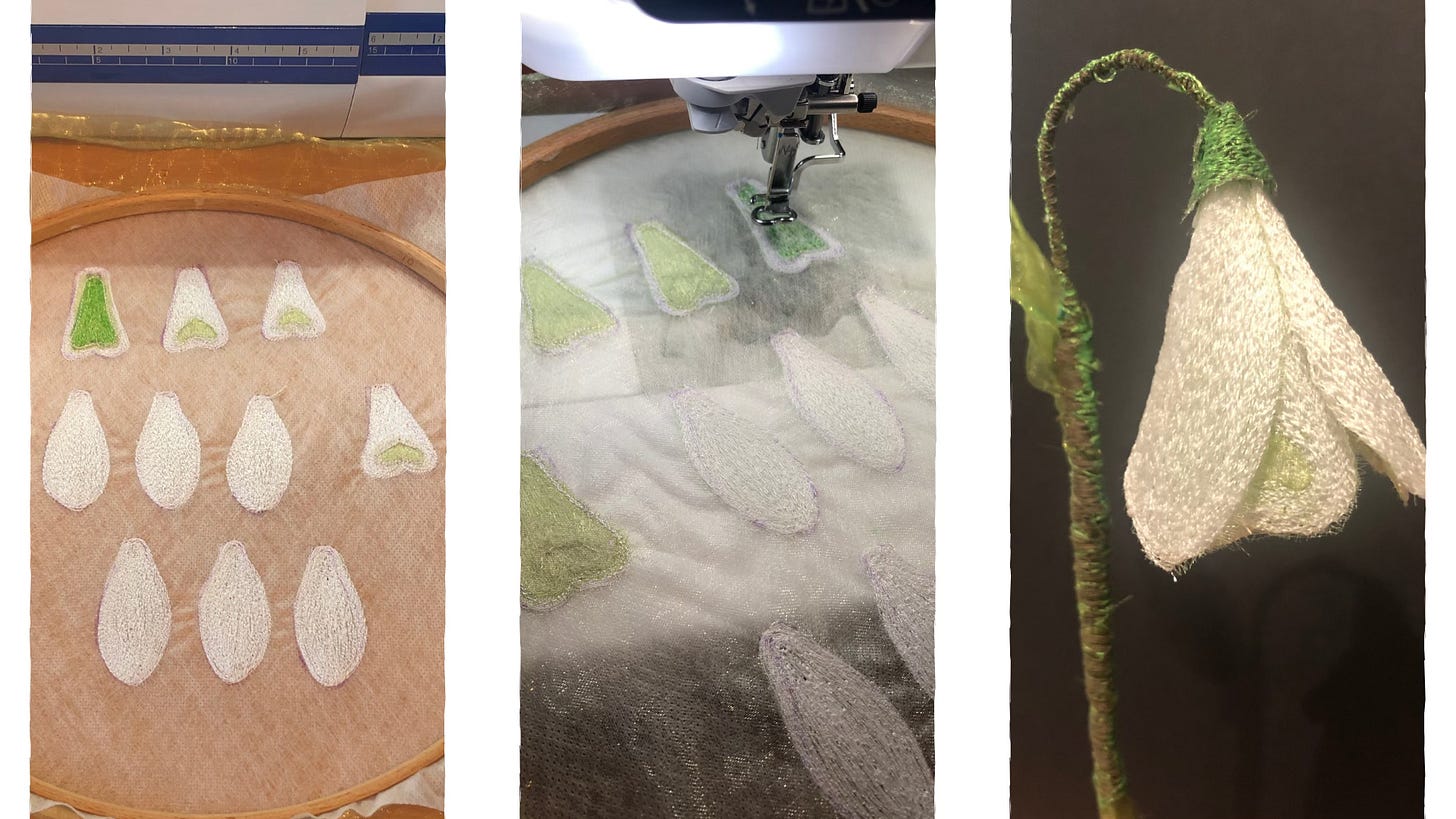Adapting the Old Ways: Stumpwork Meets the Sewing Machine
Have you ever looked at an old technique and adapted it using modern equipment and materials?
There’s something magical about traditional hand embroidery techniques — especially ones with as much history and drama as Stumpwork.
If you’ve never heard of it, Stumpwork is a method of raised, padded embroidery that dates back to the 1600s. Think 3D petals, wings that lift off the fabric, tiny fruits or animals stitched to life. It was used to decorate boxes, panels, and ornate clothing, and it's deeply rooted in storytelling — a technique that was as sculptural as it was decorative. Common motifs such as flowers, animals, fruits and figures were used to creates scenes with a naturalistic or fantastical feel.
I re-discovered the art of Stumpwork recently when I completed a City and Guilds course in machine embroidery. One of the tasks was to take the traditional technique and recreate it using the sewing machine. Not a simple task as the sewing machine is not known for 3D work!
So I started experimenting.
Could I recreate the dimensionality of Stumpwork using free-motion machine embroidery? Could I substitute traditional wire shaping with stitched outlines and layered appliqué? How far could I push this very old technique into a more contemporary, efficient space — without losing its heart?
I decided that I would use flowers and fruits as my subjects, as these motifs were widely evident in the traditional craft. I began by free-machining on a variety of fabric types to assess how successful they would be once wired and stuffed. But nothing was successful in achieving the light and delicate qualities of petals, and it was then that I reached for soluble fabric.
After many hours of trial and error, I finally developed a technique which had the potential to give me the result I was hoping for. I stitched fine wire to the soluble fabric in the shape of the individual petals and then stitched inside, blending the colours of the threads as well as incorporating sheer fabrics to certain areas. It was essential to take care in considering the top and bobbin threads to make sure that both sides of the petal had the correct delicacy of colour blending, and this took some time to achieve. Once the petals were complete, the fabric was washed away, leaving the first components for assembly. I stitched around wires to create the stems, blending colours as I stitched, and used sheer fabrics for the leaves.
It was equal parts frustrating and fascinating. There were moments where it felt like I was breaking the rules — and others where I realised that embroidery has always evolved. Someone, somewhere, had once tried something similar for the first time too.
What I learned is this: sometimes creativity comes not from starting something new, but from reshaping something old. There’s a particular joy in honouring the roots of a craft while finding a new way to make it work for you — your tools, your time, your life.
If you’ve ever adapted a technique, cut corners (with care), or merged two worlds that weren’t supposed to go together, I’d love to hear how it turned out.
After all, isn’t that what making is all about?
Happy sewing!
Suzanne, Charlotte and Rebecca
=



